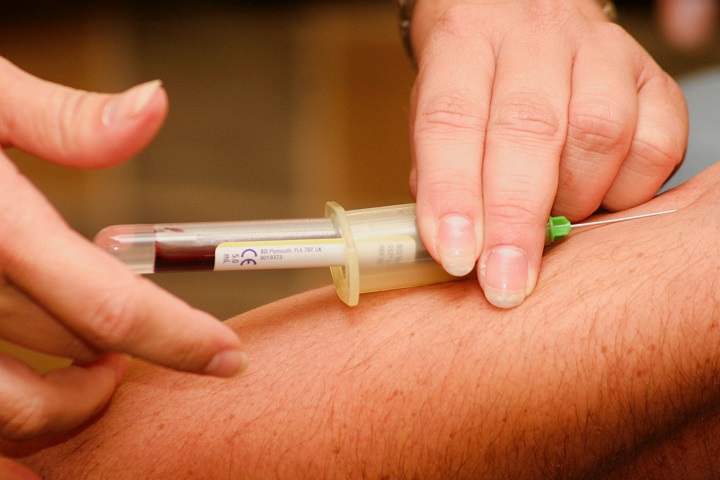Note: This post has been edited since it was originally published. It was updated to more accurately reflect the multiple different possible causes of the patient’s bad outcome, as opposed to focusing solely on a Dilaudid allergy.
The review of this case is complicated by the fact that the cause of the bad outcome was debated by plaintiff and defendant. There are competing theories about what led to the patient’s death.
Theory 1: Allergy
One explanation for the patient’s bad outcome is that she had a delayed allergic reaction to the 2 doses of Dilaudid she was given. Previously, she had several reactions to Dilaudid that resulted in unresponsive episodes and required naloxone reversal. Following this, Dilaudid was added to her allergy list. Unfortunately that allergy did not pull across to the physician’s note during her return ED visit.
Complicating this theory is the fact that during other ED visits and hospitalizations, she had been given Dilaudid with no ill effect. After being admitted to the ICU following the cardiac arrest in the waiting room, she was given further doses of Dilaudid. She did not have any respiratory depression or negative results at that time either.
Theory 2: Respiratory Depression
Another possibility is that this patient suffered multifactorial respiratory depression from multiple causes that all combined to cause apnea. Rather than a true allergic reaction to Dilaudid, the patient may have had some element of respiratory depression from this medication. This is a well-known side effect of Dilaudid, rather than a true allergy. The fact that the initial dose of Dilaudid was given IM would have delayed the onset, potentially until she was sitting in the waiting room.
Furthermore, she already had a tenuous respiratory status from her underlying fluid overload causing shortness of breath. Any of these issues alone are unlikely to cause apnea, but the combination of multiple respiratory issues may have provided the fatal physiological insult.

Theory 3: Choking
Another theory is that the patient may have actually choked on a piece of food in the waiting room. The way that this was documented casts significant doubt on the theory that she choked. The fact that the physician came back the following day and added this addendum is highly suspicious for a factitious claim. The people in the waiting room who noticed that she was unconscious did not describe any preceding distress, which would be common for a choking person.
Theory 4: Cardiac Event
The patient had multiple underlying cardiac issues, including fluid overload, abnormal cardiac anatomy, and a history of cardiac surgeries. There is a chance that her death may have been from a cardiac event that could have been unrelated to her ED presentation.
Incident Analysis
There is no way to definitively tell which of the possible theories are correct, or if there may have been another non-obvious cause that hasn’t even been considered. The author feels that the most likely option is a combination of multiple respiratory insults resulting in the bad outcome. Regardless of the specific cause of her arrest, there are several issues that can be highlighted to help avoid similar situations in the future. These can be broken down into individual issues and systems issues.
Individual Issues
One clear individual issue is the importance of reviewing the nurse’s documentation. Review of the nurse’s notes clearly showed that the patient had a documented allergy to Dilaudid with “cardiopulmonary arrest” as the listed complication. Careful review of the nurse’s documentation is the responsibility of the individual physician. Review of these notes would have equipped the physician with the correct information to select a more appropriate medication for pain control.
Another individual issue is the reliance on the patient’s husband for her allergy history. The physician asked about allergies, and the patient’s husband reportedly responded that she had none. Physicians, patients, and their family members all have a shared responsibility to arrive at the correct information. This responsibility is complicated and cannot be simplified to the point of blaming any singular person for the bad outcome, but it was an unfortunate combination of the husband’s erroneous statement and the physician’s trust in that singular statement.

Systems Issues
Another way to view this unfortunate event is through the lens of systems issues. Rather than creating a culture of blame that places the responsibility on a single person, the processes and systems that are in place can be addressed to help prevent similar outcomes. Every individual works in a complex system that strongly influences their actions.
In this case, there was a clear failure of the electronic medical record software to alert the physician of the documented allergies. Even if this was not a true allergy, she clearly had a paradoxical reaction to Dilaudid that was far outside the anticipated amount of respiratory depression, and this had happened to her multiple times previously. Documenting this under the allergy section of a medical record is appropriate, even if it does not technically meet the definition of an allergy. For some reason, this information was not presented to the physician while writing the note, nor at the user interface where the physician orders medications. The failure of the system to alert the physician to this issue is tantamount to institutional malpractice.
Swiss Cheese Model
Nearly every bad outcome can be traced through multiple failures that all culminate in a bad outcome. This is often termed the Swiss cheese model. The holes in the layers of safety measures include the information from the patient’s husband, not obtaining allergy/paradoxical medication reaction information directly from the patient, missing the allergy information on the nurse’s notes and elsewhere in the chart, nursing staff not raising the issue, EMR not alerting the physician to allergies while writing the note or ordering medication, among others.
This case is a good opportunity to learn from an unfortunate outcome and to review your own personal and institutional processes that can help prevent this from happening to your patients.
Review of Expert Witness
Every medical malpractice case requires an expert witness to assess the defending physician’s care. Their responsibility is to help people with no medical expertise (the attorneys, judge, and jury) understand the case and communicate their opinion on the standard of care. This is an extremely important role that provides a valuable service to society and can have a profound impact on fellow physicians. Unfortunately, the importance of this role has been bastardized by a small subset of physicians who are willing to hold out essentially any opinion in exchange for money. Physicians are notorious for relentlessly criticizing their peers and giving inappropriate retrospective analyses of bad outcomes.
The expert witness highlighted in this case had some reasonable opinions, but there were a few that stuck out as erroneous. The workup and assessment provided in this case is well within the standard that any board certified EM physician would provide. The bad outcome does not seem to be a result of the work-up or discharge decision. The primary concern was related to the Dilaudid that the patient was given. Rather than focusing on the actual issue of concern, the expert witness expands his criticism to the entirety of the defendant’s workup of the patient. This is a gross overreach that seems motivated by providing a specific opinion to the plaintiff’s attorney rather than a sober analysis of the workup.

A few issues are highlighted here:
Physical Exam: Orthopnea
The expert suggests that the physician should have physically placed the patient in a recumbent position to assess for worsening of her shortness of breath. Even if positive, this additional information would not have changed the workup or disposition. The physician had evidence of her fluid overload based on the patient’s history of being on dialysis, chest x-ray demonstrating such, and elevated BNP (although this is confounded by the fact that she is on dialysis). While this physical exam maneuver would have provided an additional piece of information, there is no valid argument to be made that it would have changed her disposition. Furthermore, it would not have affected the fact that she was given Dilaudid.
Chest x-ray: Portable or 2-view
The expert suggests that the single portable chest x-ray was insufficient. He opines that a “definitive two view CXR in this case is necessary in order to appropriately screen for and potentially rule out or rule in interstitial infiltrates in the lungs”. This is a bizarre opinion in light of the fact that the radiologist’s interpretation of the single chest x-ray does in fact state “there is pulmonary vascular congestion and interstitial infiltrates. Findings suggest fluid overload with congestive failure.” The CXR that was ordered is entirely sufficient and provides the necessary information. The expert is unable to provide any explanation as to how the 2 view CXR would provide either 1) any different information or 2) information that would have changed this patient’s management.
BNP and Further Testing
The expert states that the elevated BNP necessitated further testing “in order to rule out fluid overload leading to acute on chronic heart failure suggested by the tests done to that point”. No further ED testing needs to be done at that point; the patient has a history, past medical history, chest x-ray, and BNP that all clearly indicate she had volume overload. The expert witness makes the claim without suggesting what else should have been done in the ED at that point. Fluid overload and acute CHF do not necessarily warrant further ED testing or even admission to the hospital. Depending on the patient’s respiratory status and vitals, many can be treated as outpatients and follow-up with their outpatient physicians for any further testing.

Blood Glucose
The expert claims that the patient’s blood glucose was not appropriately addressed. Her glucose was 418, she was given 15 units of humulin, and almost 2 hours later it had improved to 318. Hyperglycemia alone is not an emergency medical condition. It can certainly be a sign of an emergency condition, but many patients are chronically at this level. The expert awkwardly attempts to first claim that her blood sugar was too high and uncontrolled, then reverses course and claims that 15 units of humulin is essentially an overdose that caused her hypoglycemia 4 hours later in the ICU, and ultimately her anoxic brain injury.
Conclusion
Ultimately, it seems clear that the expert witness is bent on criticizing whatever decisions were made by the defendant physician, whether or not the decisions had any direct effect on the patient’s negative outcome. It is highly suspect that his opinion is based more on what he is being paid to write, rather than actual medical expertise or facts. Instead of focusing only on the actual cause of the bad outcome (which is not even a settled conclusion, many reasonable physicians could reasonably disagree), he attempts to widely criticize nearly every decision made by the physician, and does so in an inappropriate manner.